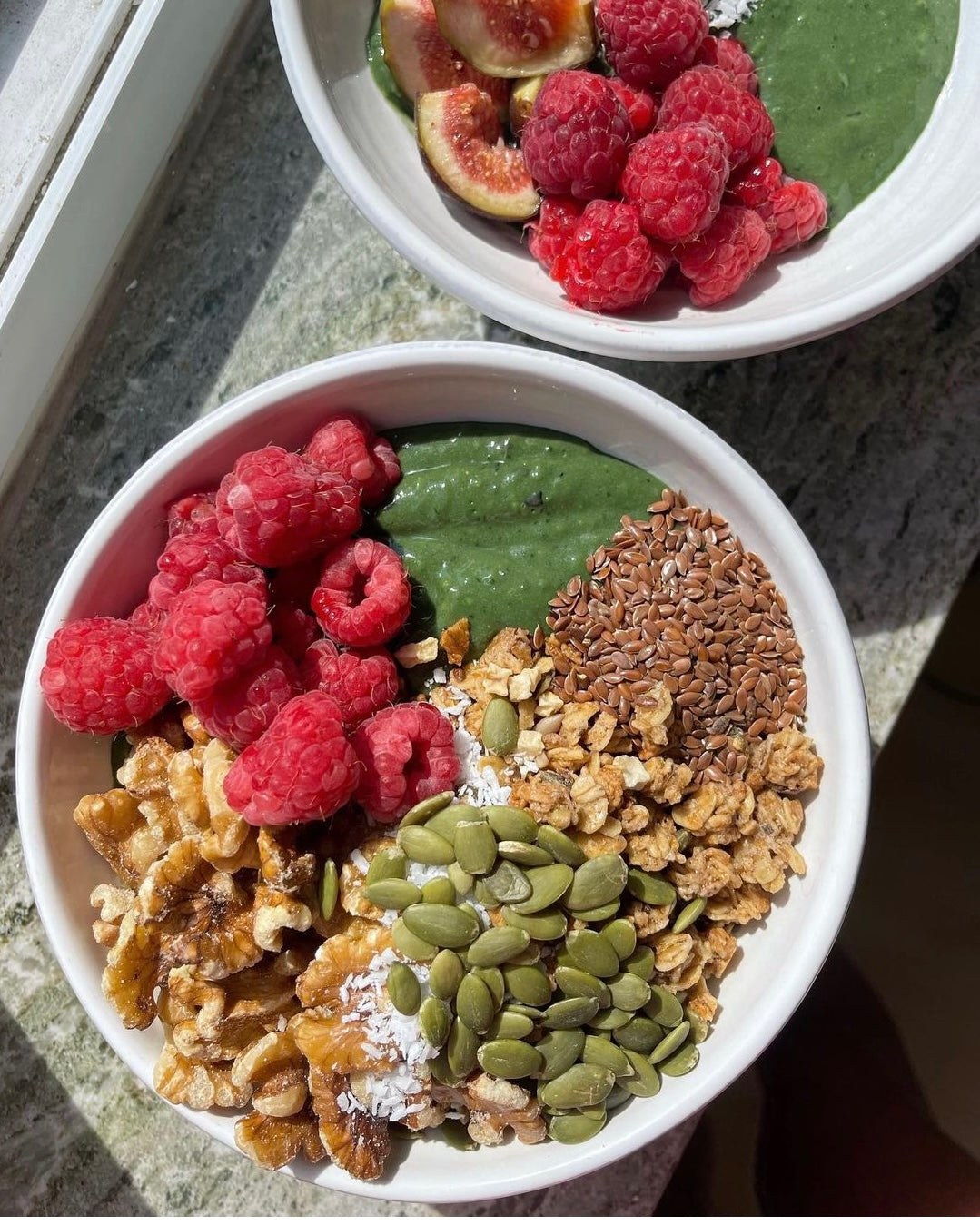Today, one of the women from the Womensync community, Stina , shares her inspiration on what type of food and nutrition helped her improve her endometriosis. You will get inspiration for nutritious alternatives for breakfast, lunch and dinner that helped Stina reduce her symptoms such as severe period pains and stomach problems. We want to remind you that there is no one way to eat less than there is a work that suits everyone - you are unique.
Food for endometriosis
As we wrote about in previous posts (link), a powerful tool for endometriosis can be to reduce foods that can trigger inflammation . In order to achieve balanced hormones and thus a strong and healthy menstrual cycle, an important part is to get enough and a variety of high-quality fats, complete protein and complex carbohydrates.
What kind of food can be good for endometriosis?
For me (Stina), I have learned during my healing process what makes my body and endometriosis feel the best. What I have noticed is that I feel most balanced physically, emotionally and mentally when I add extra fat and protein in the morning and afternoon.
A day in food
Exactly what and how I eat varies, of course, depending on where I am in my cycle and how I feel, but I would say that a day could look something like this for me in terms of food:
Breakfast : Buckwheat porridge with a dollop of butter or coconut oil in it, preferably cooked with both water and fat coconut milk. I like to top with even more coconut milk, berries in different colors, chia seeds and preferably buckwheat crunch. If I'm extra hungry, I make sure to eat an organic egg or two.

Porridge made from buckwheat with butter, topped with almond butter, banana, blueberries, buckwheat crunch and coconut milk.
Lunch: My favorite lunch, which can be varied endlessly and never goes wrong, is a plate with lots of greens, lots of good fats and of course some filling protein. If I have to choose, it is filled with lots of green leaves, beetroot and avocado (fat), feta cheese (protein), a good piece of salmon (fat and protein), a sprinkling of seeds (fat) and a good dressing of tahini, olive oil and lemon.

Fried kale in real butter, oven-baked beets and sweet potatoes, olives, walnuts, pumpkin seeds and a dressing of olive oil, lemon and spices.
Dinners: it can be anything from a warm, hearty salad to a delicious stew. Here I am not as careful about the addition of fat and complete protein. For me, it is important to also be able to have a balanced approach to food, and if I think too much, then it also becomes too much in my head. Things I can keep in mind though is that if I make a healthy salad, yes then I add quinoa (for the complete protein) and if I make a stew, yes then I make sure to have some extra fat in it.

Lentil stew with raw rice, fried broccoli in real butter and nuts and seeds .
For even more insight into high-quality fats and complete proteins that you can experiment with, check out the following post (link). What is important to bear in mind when it comes to diet, nutrition and the menstrual cycle is that there are a number of factors that come into play, such as life situation, background, allergies and possible diseases and diagnoses. There is no one way of eating that is right for everyone. Therefore, an important part of syncing nutrition to your menstrual cycle is listening to what your body is signaling to you.
Do you want to learn more about how you can support your body with endometriosis?
Check out Stina's Holistic Circle, which is a concept where they review crucial knowledge, habits and tools to impact endometriosis. She is a trained kinesiologist . If you are interested, write to Stina on Instagram: @stinapersdotter .
For those who want to read more about endometriosis, you can read the following blog posts:
- What is endometriosis?
- Diet, nutrition and endometriosis
- Success stories from the endometriosis community: Stina's story and Elin's story .

